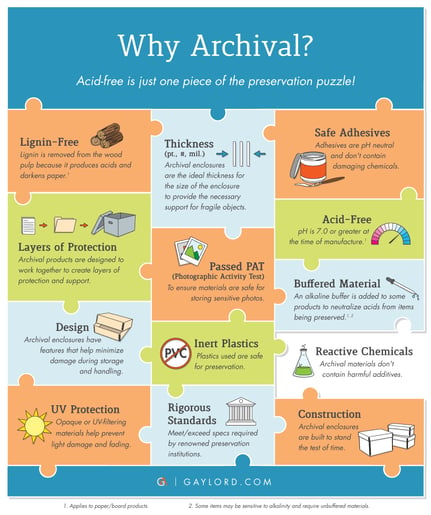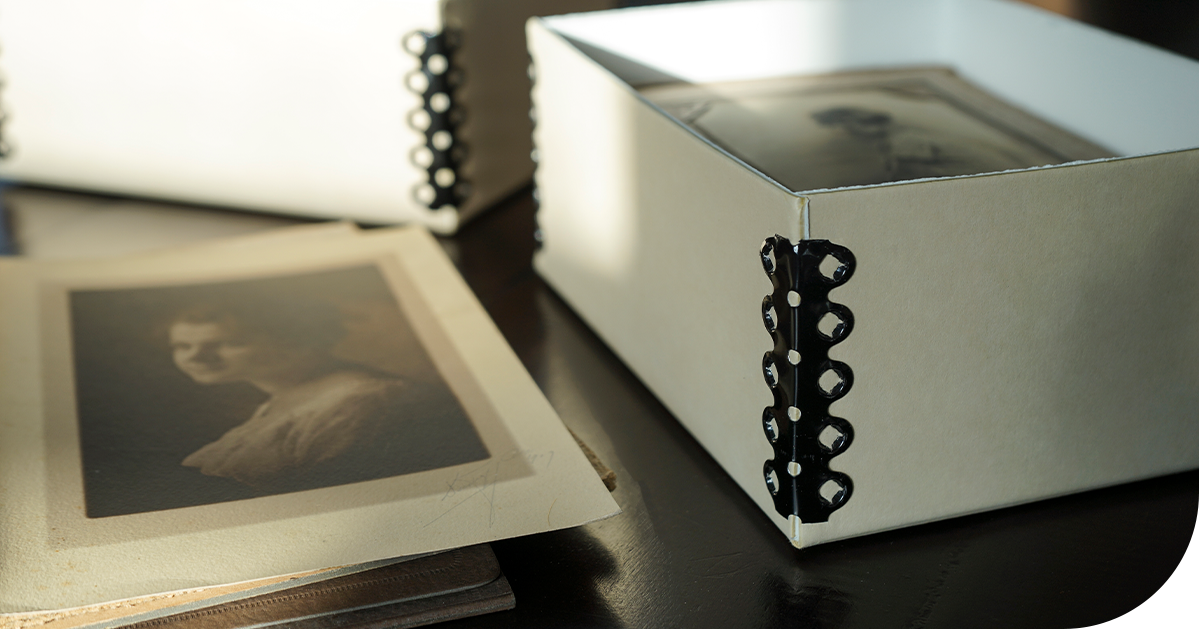Photographs are delicate and require careful consideration of various factors to ensure their longevity, including the materials used in their storage. One standard method for evaluating the safety of storage materials is the Photographic Activity Test (P.A.T.). We'll review the purpose of the test, how the test works, what the results mean, and what you can take away from a product that indicates it passed the P.A.T.
Purpose of the P.A.T.
The Photographic Activity Test is an internationally recognized standard (ISO 18916) developed to assess the potential for materials to cause damage to photographs over time. It identifies substances that may contribute to the deterioration of photographs, negatives and slides.
How the P.A.T. Works
During the P.A.T. testing process, materials are exposed to specific test conditions that simulate the environmental factors encountered during storage. Two detectors are used to determine the possibility of chemical interactions between photographs and their storage materials.
The first tests for chemical reactions that can cause fading, silver mirroring, and red or gold spots (foxing). The second checks for chromophores which can cause yellowing of the material the photograph is printed on.
What Does Passed P.A.T. Mean?
Materials that pass the P.A.T. pose a minimal risk of causing harm to photographic materials. Institutions and individuals can confidently choose these materials for long-term storage.
If it's photo-safe, is that the same thing?
Photo safe is not a standardized term and its meaning can vary based on interpretation. "Photo safe" often implies that the materials used are considered to be non-reactive or safe for long-term storage of photographs. However, the P.A.T. is a standardized test method meaning it is a more rigorous and scientific approach to determining the safety of storage and display materials for photographs.
Want to learn more?
- ISO 18916:2007- Imaging Materials -- Photographic activity test for enclosure materials
- The International Organization for Standardization (ISO) publishes standards related to imaging materials. ISO 18916 is specifically about the Photographic Activity Test.
- Image Permanence Institute (IPI)
- The IPI is a research center focused on the preservation of cultural heritage collections, including photographs. They provide valuable resources, research publications and technical bulletins related to the Photographic Activity Test.
- U.S. Library of Congress - Preservation Directorate
- The Library of Congress offers resources on preservation, including information about testing and standards.
- Conservation Online (CoOL)
- CoOL is a project of the Foundation of the American Institute for Conservation (FAIC). It provides access to a wide range of resources related to conservation, including articles and publications on preservation testing methods.

Why Archival?
Passing the P.A.T. is just one piece of what makes storage materials archival. Check out out infographic to learn more.

